
In today’s dynamic work environment, where work can take place both at home and in the office, ensuring a seamless end-user experience remains a top priority for IT teams. Leveraging powerful tools like Intune can play a crucial role in delivering an excellent experience.
One component of Intune, Endpoint Analytics, holds the key to delivering an enhanced user experience and streamlining endpoint management. By harnessing the capabilities of Endpoint Analytics, businesses can empower their support teams with valuable insights derived from user and device data analytics. These insights enable proactive monitoring, analysis, and elevation of the user experience, leading to better outcomes and increased productivity.
With endpoint analytics, businesses can unlock a new level of understanding and responsiveness, ensuring that the needs and expectations of their users are met with efficiency and precision.
Endpoint Analytics: Understanding the Concept
An accompaniment to Intune, Endpoint analytics can be likened to a surveillance system for analyzing endpoints, such as user devices. The intention is to provide administrators with a proactive approach to monitor and address various issues that end-users may encounter in their day-to-day operations. These issues could range from drive storage limitations to battery deterioration or even faulty memory.
To a degree, endpoint analytics functions as a Remote Monitoring and Management (RMM) tool, constantly gathering data from enrolled devices and flagging abnormalities.
Accessing Endpoint Analytics
To access Endpoint Analytics, you must first enable health monitoring during the configuration process. Once enabled, you will receive a notification to activate endpoint analytics.
However, it’s worth noting that accessing this feature is not as straightforward as navigating through the standard Intune dashboard. Oddly enough, it requires a separate link that may need to be shared or searched for separately. We’ll save you the trouble of looking, here is the link you’ll need to get to your Endpoint Analytics Dashboard: https://endpoint.microsoft.com/#view/Microsoft_Intune_Enrollment/UXAnalyticsMenu
Navigating the Endpoint Analytics Dashboard
Once you access the Endpoint Analytics dashboard, you’ll find a comprehensive overview of device performance, application reliability, and productivity metrics. The dashboard provides valuable insights into the overall health of the devices under management. While the specifics may vary depending on the configuration and baselines set, it generally offers information on startup performance, application reliability, and work-from-anywhere capabilities.
STARTUP PERFORMANCE: A MEASURE OF EFFICIENCY
Startup performance focuses on how swiftly devices boot up and become functional. Taking a critical look at startup performance, administrators can identify instances where devices take longer than expected to reach the desktop. This information can help troubleshoot issues such as resource-intensive startup applications that impede efficient boot times.
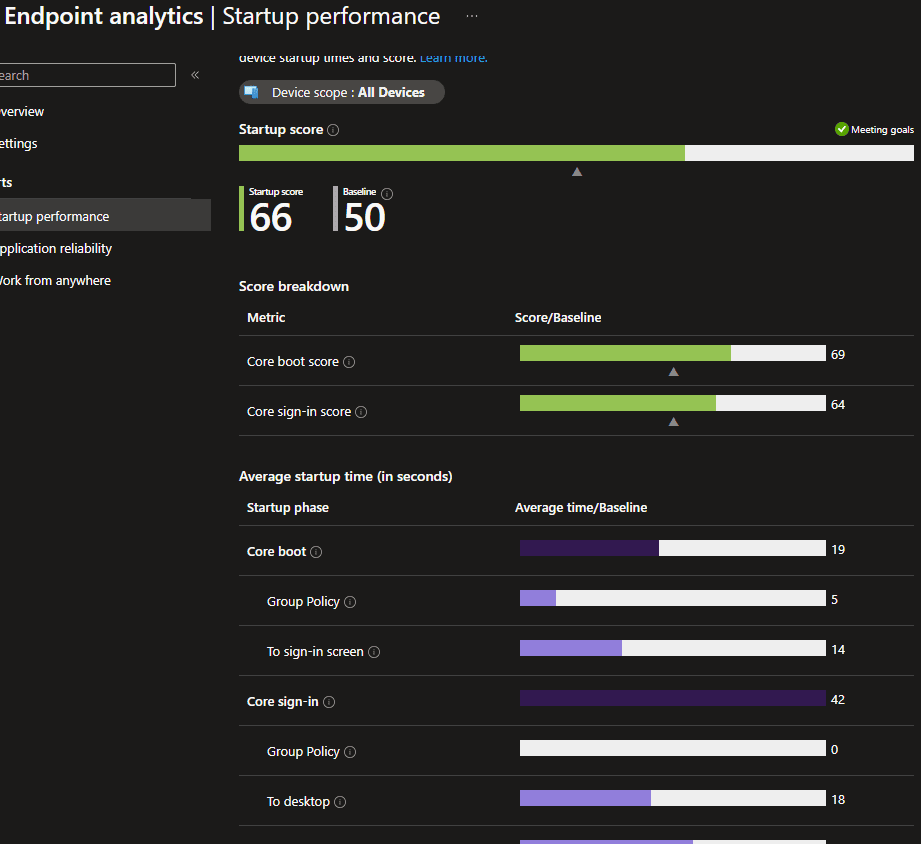
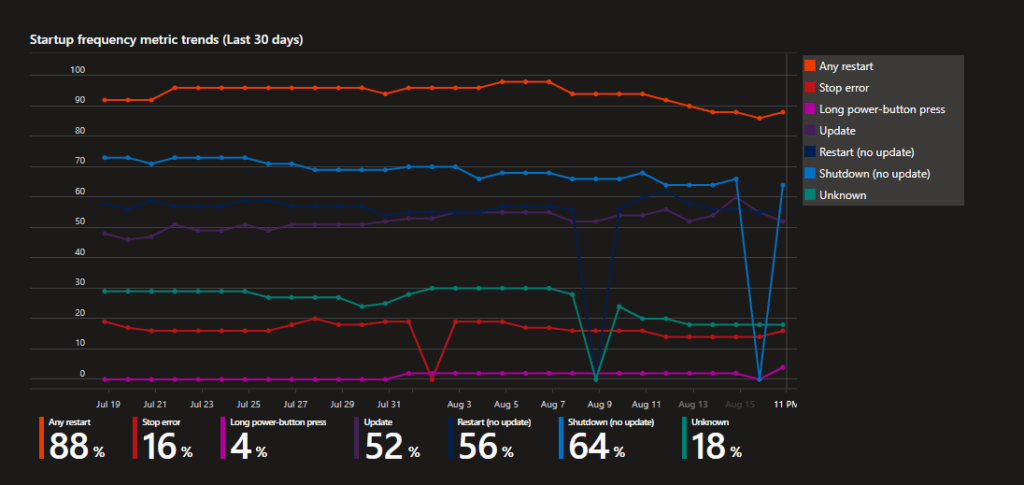
APPLICATION RELIABILITY: ENSURING SEAMLESS EXPERIENCE
Application reliability is a crucial aspect of Endpoint Analytics, as it helps administrators detect any potential issues with frequently used applications. By tracking the performance and stability of applications, administrators can identify and address issues that may hinder user productivity.
This proactive approach ensures that end-users have a seamless experience while minimizing disruptions caused by application failures or crashes.
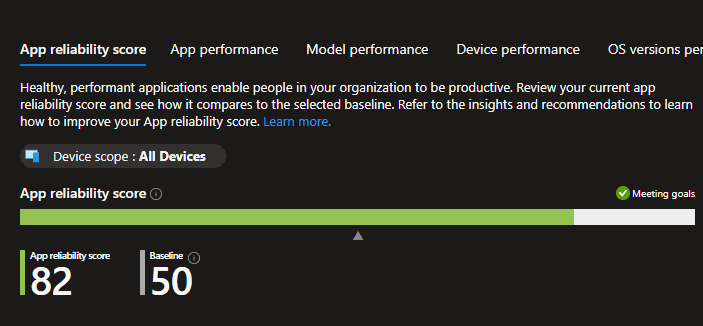
WORK FROM ANYWHERE: FACILITATING REMOTE PRODUCTIVITY
The work-from-anywhere feature of Endpoint Analytics allows administrators to assess how effectively devices support remote work scenarios. It provides insights into connectivity, network latency, and overall user experience when operating outside the traditional office environment.
By identifying and addressing any limitations or connectivity issues, administrators can improve devices for remote productivity and empower users to work efficiently from anywhere.
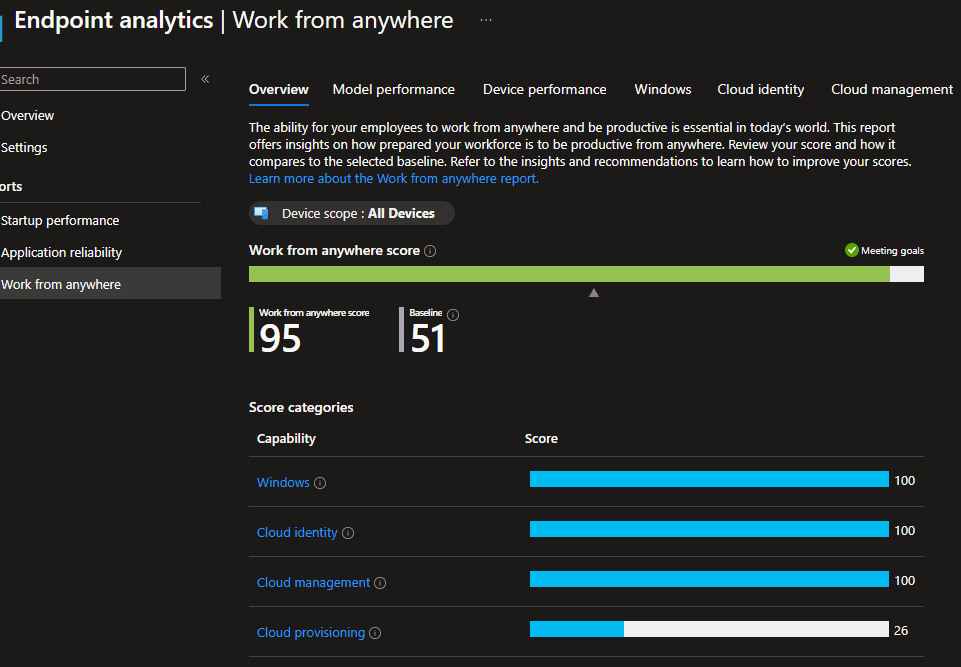
ANOMALIES
The Anomalies window provides a synopsis of deviations or irregularities that can occur in the behavior or performance of devices. These anomalies are detected through various factors such as user productivity, end-user experience, configuration changes, errors, and root cause analysis. By applying filters like severity, status, and affected devices, anomalies can be identified and analyzed.
Anomalies can be strong indicators of potential issues or abnormalities in device performance, allowing for proactive troubleshooting and maintenance.
DEVICE SCORES
Device scores play a pivotal role in evaluating the performance and health of devices within an organization. These scores provide valuable insights into the condition and functionality of devices, indicating whether they meet established goals and operate within expected parameters. By monitoring device scores, administrators can assess the overall effectiveness and user experience of their devices.
Factors such as update phase, group policies, sign-in screens, and OS restarts can influence device scores. Anomalies in device scores may signify configuration changes, errors, or other issues that impact productivity and end-user experience.
Through analysis of device scores, admins are able to identify areas of improvement, conduct root cause analysis, and implement necessary adjustments to better device performance and enhance user productivity. The feature helps groups to maintain a healthy device ecosystem and ensure a seamless technological experience for end-users.
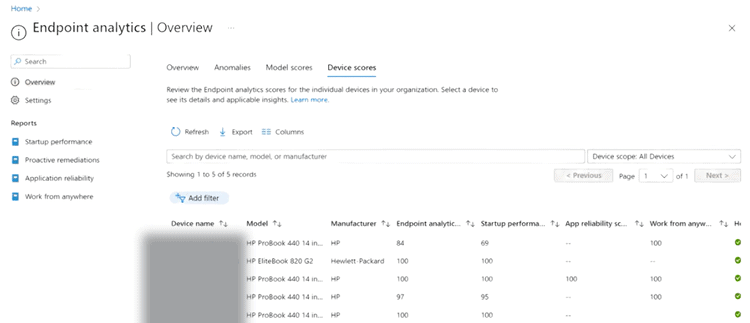
Conclusion:
Endpoint Analytics is an invaluable tool for administrators and organizations seeking to proactively monitor and address device-related issues. By leveraging the insights gained through this feature, administrators can ensure optimal device performance, enhance user experiences, and drastically decrease disruptions. Endpoint Analytics provides many benefits that make it worth having as part of an IT team’s toolkit. Despite a separate link and some navigational difficulties, these benefits outweigh any negative aspects.
If you’d like to know more about how Endpoint Analytics can deliver a better end-user experience or would simply like some suggestions on how to set it up, drop us a line. We’ll be happy to help.
CONTACT US TO LEARN MORE ABOUT MODERN REMOTE SUPPORT

Terrence Brown
Terrence is our Modern Work and Security Manager in the US and works with clients in the Microsoft O365 space helping to design and develop Endpoint Management solutions. Terrence is a Marine Corps veteran and graduate of Kaplan University. Prior to joining Mobile Mentor, Terrence spent over 5 years working for a Microsoft top 10 Consulting partner in the SCCM and O365 technology space where he implemented and designed solutions for different clients both large and small.



